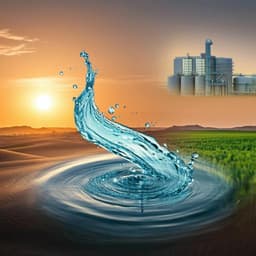
Earth Sciences
Seasonal overturn and stratification changes drive deep-water warming in one of Earth's largest lakes
E. J. Anderson, C. A. Stow, et al.
This groundbreaking study by Eric J. Anderson and colleagues dives into three decades of high-frequency subsurface water temperature data in Lake Michigan, uncovering alarming trends in deep-water winter warming. These shifts not only signal changes in fall overturn and stratification but also carry significant consequences for the lake's ecosystem.
Playback language: English
Related Publications
Explore these studies to deepen your understanding of the subject.







